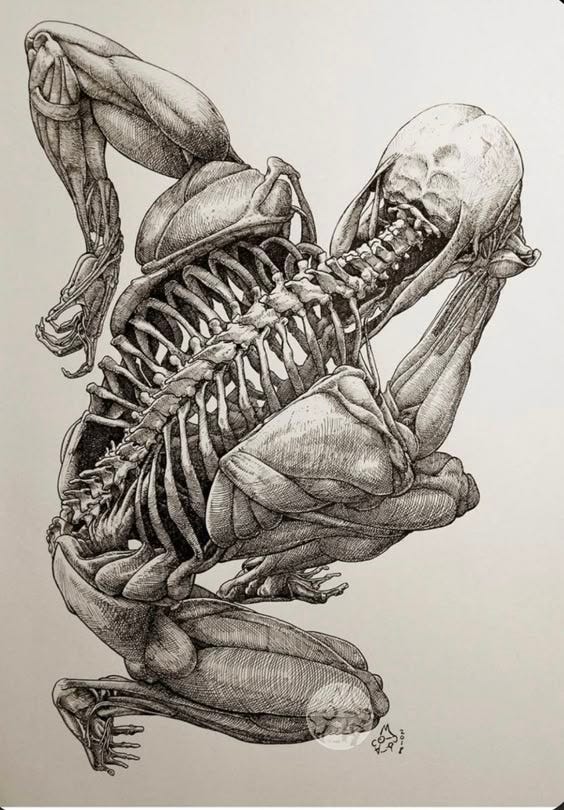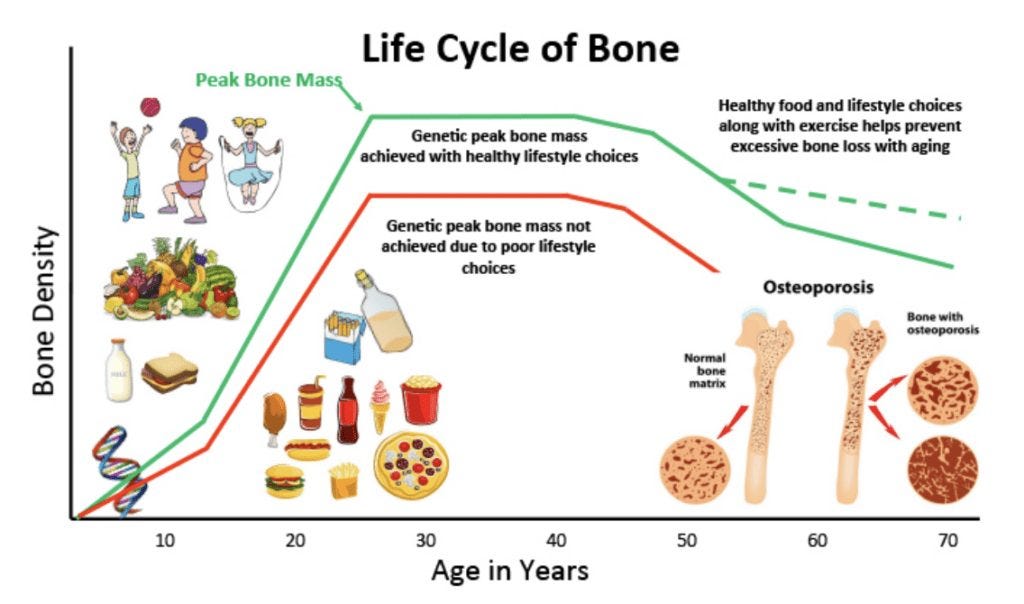The Bone Density Protocol
Nutrition, Training and Supplementation for a Titanium Skeleton
Hey everybody,
Hopefully my last post (tendon maxxing protocol) convinced you that there’s more to physical health than just big muscles.
We’ve talked tendons, now lets talk bones. They’re what your ligaments and tendons are connected to after all.
When was the last time you thought about your bones? If you’re under 40, you probably haven’t. We take our skeletal system for granted - until something goes wrong.
Bone density is a crucial component to performance, longevity, and being a physical specimen (which is what we’re all aspiring for here at Health HQ)
Consider this:
Osteoperosis affects over 10 million, with another 44 million at risk due to low bone mass
Research shows that just a 10% increase in peak bone mass in children can reduce the risk of fracture in adult life by 50%
1 in 2 women and 1 in 4 men age 50 and older will break a bone due to osteoperosis
If you want to have old man (or woman) strength, you need to prioritize bone density now. Before its too late.
Why Bone Density Matters
Bone density isn’t just a preventative measure, strong bones are crucial for overall health:
Athletic Performance:
Denser bones can handle more stress, allowing you to recover faster and train harder. Higher bone density is associated with improved sprint and jump performance
Longevity:
Your bones are mineral reservoirs for your body. Maintaining bone health preserves overall health
Metabolic health:
We’ve recently found that bones play a role in blood sugar regulation and fat metabolism. Osteocalcin, a hormone released by bone cells, helps regulate insulin sensitivity and glucose metabolism. Bones are, in fact, an endocrine organ
Quality of Life:
Strong bones contribute to better posture, better breathing, less back pain, and more confidence. We all know a guy who doesn’t have much muscle but still looks dense & poised. He’s probably bone density maxxing.
Its never too early (or too late) to start maxxing out your skeleton’s stats. This protocol will give you the nutrition, supplementation, training, and biohacks you need to have upper echelon bone health. You’ll be able to hit harder, sprint faster, and jump higher. All without risking catastrophic injury. Let commence
The Science of Bone Structure
A quick crash course on how bones work:
Bones are living, dynamic tissues. They’re composed mainly of minerals (70%), mainly hydroxyapatite, a crystalline complex of calcium and phosphate. This mineral gives bones their hardness and strength. Teeth too.
The rest of bone is made up of a collagen matrix, mostly type 1 collagen fibers. This provides bones their flexibility and resistance to fracture.
The two bone tissue types:
Cortical bone: The dense outer layer. This provides bone hardness and makes up about 80% of skeletal mass
Trabecular (spongy) bone: The porous inner structure of bone. This is where the metabolic and hormonal signaling happens.
Cellular components:
Osteoblasts: Bone forming cells. These produce new bone matrix
Osteoclasts: Bone resorbing cells. These break down old or damaged bone
Osteocytes: Mature bone cells. These detect mechanical stress on the bones (and signal osteoblast production)

Bone Remodeling: Build Better Bones:
Bones are constantly being remodeled. Osteoblasts form new cells, osteoclasts break down old ones. With proper nutrition, supplementation, and training, we can effectively remodel our bones to be thicker, denser, and stronger, while reaping the metabolic benefits of that inner bone matrix
Bone density, like most attributes, is driven by genetics. But these genes don’t predetermine, they predispose. You have the power to overcome your genetics, to rewrite your own density. I did it, so can you.
Nutrition and Supplementation for Optimal Bone Density:
You are what you eat. If you want to rebuild your bones you need to provide the right building blocks: minerals and collagen. But these parts alone aren’t enough, you need the right micronutrients to make sure those building blocks are going to bone formation and not calcifying your tissues.
Building better bones comes down to:
Calcium absorption & utilization
Bone matrix formation (the inner spongy part)
Bone mineralization
Hormone regulation
Bone cell function & support
All of these are nutrients you can get from diet, but its
Calcium
Calcium is the primary mineral in your bones, forming hydroxyapatite. Its also crucial for osteoblasts to produce collagen. No calcium, no bones. But the calcium you eat needs to be properly shuttled to your bones, otherwise you risk calcifying other tissues (like your arteries).








